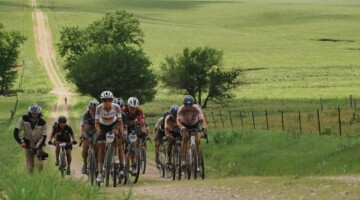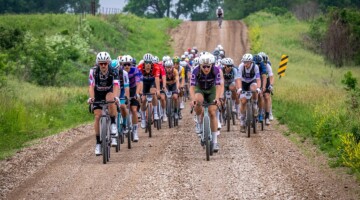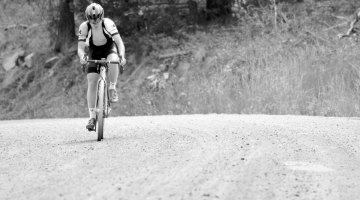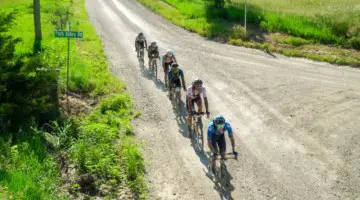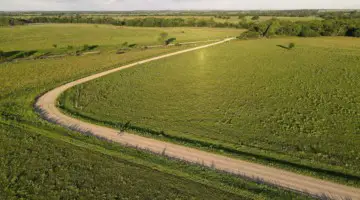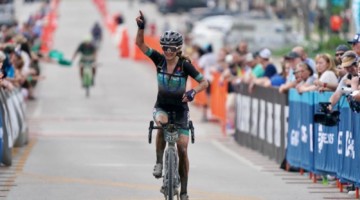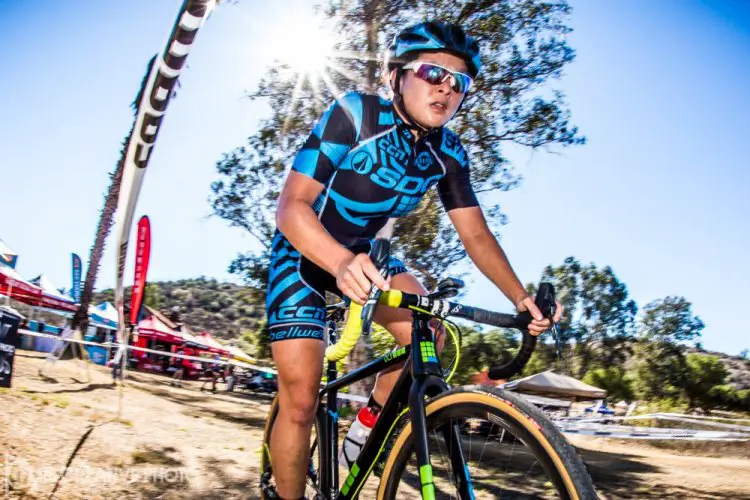
Amanda Nauman, able to tackle cyclocross courses and 200 mile gravel rides. © Philip Beckman/PB Creative
During the 2015 Dirty Kanza 200, Amanda Nauman, a cyclocrosser from Southern California, was able to adapt her training and not only take on one of the longest gravel rides in the world, but win it as well. In today’s Technique Tuesday, she explains the different preparations she took for the gravel race compared to her 45 minute cyclocross races, as well as preparing and pacing the right nutrition for a long 14-plus hour race.
by Amanda Nauman
Training for the Dirty Kanza 200:
How does one prepare for a series of gravel events as compared to a season of cyclocross? The two require very different energy systems during the race so it’s important to focus on the specific work you’re going to ask your body to perform when it comes to either type of event.
Because of my commitment to the gravel discipline, the development of training from February through May was perfectly executed to do well at the Dirty Kanza 200. There were a lot of tempo and threshold-specific workouts during the week with longer, steady power miles on the weekends. [Ed. Note: The intervals referred here are no higher intensity than the maximum effort that a rider can expend over the course of an hour (tempo is even less), which are opposed to the higher-intensity intervals, such as VO2 Max and sprint intervals].
For the past couple years, this is how I would prepare for cyclocross season during the summer but not how I would train during the season. Cyclocross demands high-intensity efforts for a fraction of the time of a gravel event, so based on goals you have to train accordingly at certain times of the year.
Nutrition and Hydration During the Dirty Kanza 200:
I had a serious nutrition strategy for the 200 mile race, or as the CTS Coaches like to call it, the 200 mile eating competition. I did a bit of homework planning everything out based on aid station locations, neutral water stops, and Camelback, saddlebag, bento box, and pocket capacity. In comparison, I will occasionally keep a bottle on my bike but hardly ever worry about nutrition during a cyclocross race.
Hydration came from two 70-ounce Camelbaks. One I had at the start, then the next one I put on at checkpoint one and refilled at checkpoint two. It was my first race experience with a Camelbak and I enjoyed the ease of use. I also had two 20-oz bottles on the bike that were full, empty, or not present at any point during the race due to the muddy, bumpy, Flinthill adventure.
Nutrition came from all over the place. With no allegiance to one nutrition sponsor, I’m free to admit I ate whatever I needed and wanted. With a goal of consuming 200-250 calories per hour and an eye on my Kilojoule (kj) expenditure, I knew how and when to stay fueled. By the end of the race, here’s a list of items that made it to my gut: Gu tabs, a hefty amount of Cytomax drink mix, Probar Chews, Cytomax Chews, bananas, Coke, Bonkbreaker bar, Clif bar, a Rip van Wafel, and Mini Sandwches of Hawaiian bread w/ PB and Nutella.
Overall, I ate early and frequently, forced a lot of carbohydrates into the system, drank plenty (enough to take a nature break or two), and was very happy with a beer at the end of the ride!























